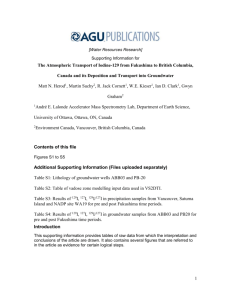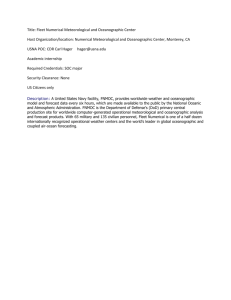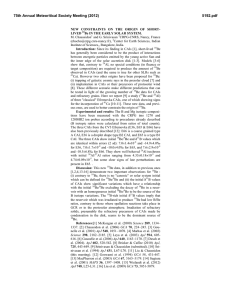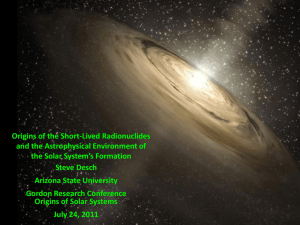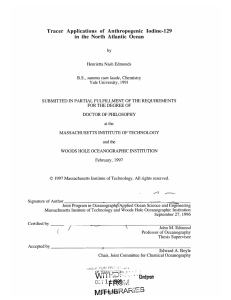Abstract-Tuniz-Thu29
advertisement
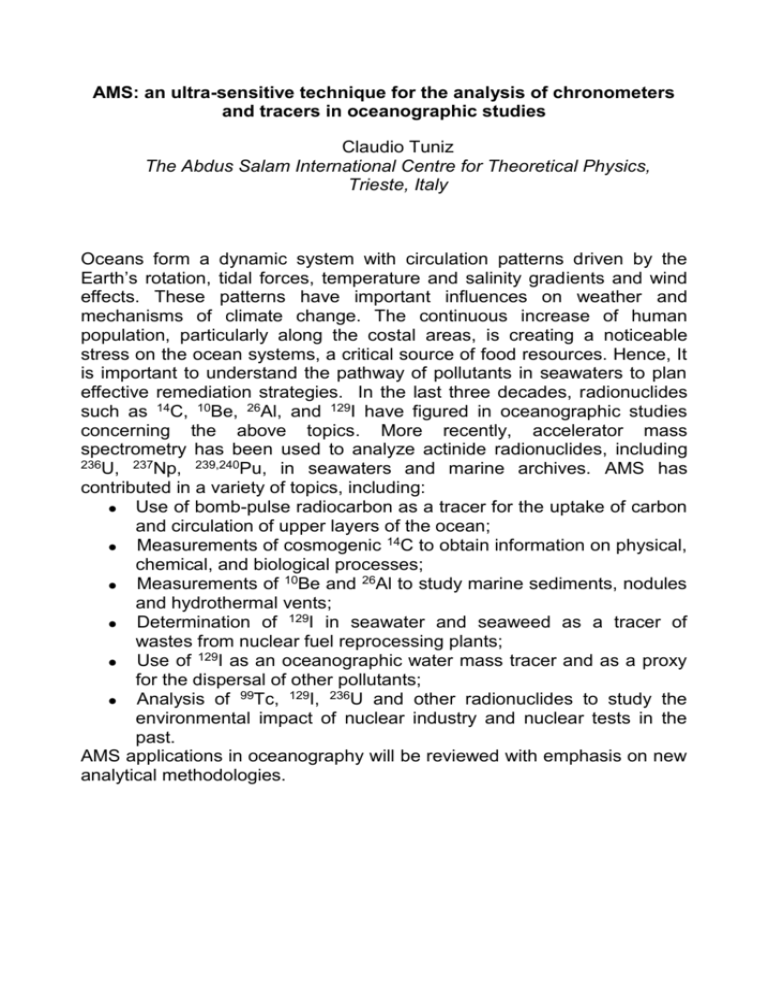
AMS: an ultra-sensitive technique for the analysis of chronometers and tracers in oceanographic studies Claudio Tuniz The Abdus Salam International Centre for Theoretical Physics, Trieste, Italy Oceans form a dynamic system with circulation patterns driven by the Earth’s rotation, tidal forces, temperature and salinity gradients and wind effects. These patterns have important influences on weather and mechanisms of climate change. The continuous increase of human population, particularly along the costal areas, is creating a noticeable stress on the ocean systems, a critical source of food resources. Hence, It is important to understand the pathway of pollutants in seawaters to plan effective remediation strategies. In the last three decades, radionuclides such as 14C, 10Be, 26Al, and 129I have figured in oceanographic studies concerning the above topics. More recently, accelerator mass spectrometry has been used to analyze actinide radionuclides, including 236U, 237Np, 239,240Pu, in seawaters and marine archives. AMS has contributed in a variety of topics, including: Use of bomb-pulse radiocarbon as a tracer for the uptake of carbon and circulation of upper layers of the ocean; Measurements of cosmogenic 14C to obtain information on physical, chemical, and biological processes; Measurements of 10Be and 26Al to study marine sediments, nodules and hydrothermal vents; Determination of 129I in seawater and seaweed as a tracer of wastes from nuclear fuel reprocessing plants; Use of 129I as an oceanographic water mass tracer and as a proxy for the dispersal of other pollutants; Analysis of 99Tc, 129I, 236U and other radionuclides to study the environmental impact of nuclear industry and nuclear tests in the past. AMS applications in oceanography will be reviewed with emphasis on new analytical methodologies.

